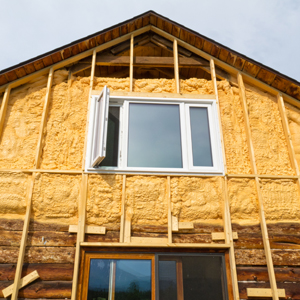

By Andrea Krim | Tue, July 12, 22
We keep hearing about devastating storms, like hurricanes and tornadoes, destroying homes and buildings across the country. We see that no building is safe. In 2019 alone, The National Oceanic and Atmospheric Administration estimated that there were 14 weather and climate disaster events with monetary losses exceeding $1 billion dollars in the United States alone. In the aftermath of these disasters, buildings must be rebuilt, but how can we make sure they, along with the newly constructed buildings popping up everywhere, can withstand these ever-increasing and hugely detrimental natural disasters?
A more resilient building can be defined as a building that is prepared for, can recover from, and can more successfully adapt to future adverse weather events. We hear this term and we know how important it is for our buildings to be resilient so they do not have to be rebuilt. As we aim to decarbonize the built environment, can more efficient buildings also be more resilient? The answer is yes, and although not a perfect solution, updated building codes, including energy codes, give buildings a higher level of protection from wind, extreme heat and cold, fire, and other hazards than buildings built using older codes.
How Updated Energy Codes Make Homes More Resilient
The most well-known benefit of constructing buildings with updated energy codes is that these buildings use less energy. Energy codes, however, also increase a building’s resiliency because more efficient buildings have a more durable building envelope and better ventilation. According to the Institute for Market Transformation, buildings with updated energy codes are more resilient than older homes because they require:
- A more durable building thermal envelope;
- Increased air leakage prevention;
- Increased air sealing requirements; and
- Increased use of insulation.
The above provisions allow buildings to better adapt to extreme cold and hot weather by reducing unwanted air transfer, which keeps harmful air outside of the home. These resiliency benefits can be the difference between a home being destroyed and/or unlivable after a natural disaster and one that can withstand and remain occupied.
Prioritizing Resiliency Will Make New Buildings More Efficient
Although many communities and states in the NEEP region prioritize updating their building energy codes to make new construction more energy efficient, some struggle to get all codes stakeholders on board with updating to the most recent version of the International Energy Conservation Code (IECC) and the American Society of Heating and Air-Conditioning Engineers (ASHRAE) codes. However, prioritizing the construction of buildings that are not only more efficient, but also resilient, can be an effective and compelling argument for updating statewide energy codes.
Stakeholders in building resiliency that are not always considered – such as architects, fire marshals, insurance companies, and building owners with increasing insurance rates – must be engaged in the energy codes process because they witness, and sometimes have to compensate for, any unforeseen weather impacts to buildings in their communities. Insurance companies, for example, have had to increase their rates and even deny coverage in areas that have had numerous devastating weather events because of the increasing costs of covering certain buildings. These stakeholders, who are not typically involved in the codes process, can be a strong supportive voice for updating building energy codes. They need to be engaged in order to build more support.
Conclusion
States must prioritize updating their building energy codes to ensure the built environment is as resilient as possible since natural disasters, and the damage they cause, are increasing across the nation. Communities and states struggling to adopt newer model codes must begin including information about and stressing the importance of how energy-efficient buildings are more resilient. States must also begin engaging stakeholders that understand the value of non-energy benefits of updated energy codes in order to build more support for updating codes.

